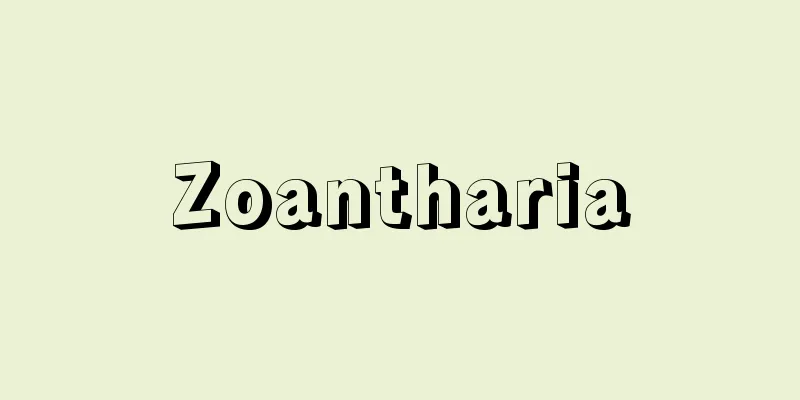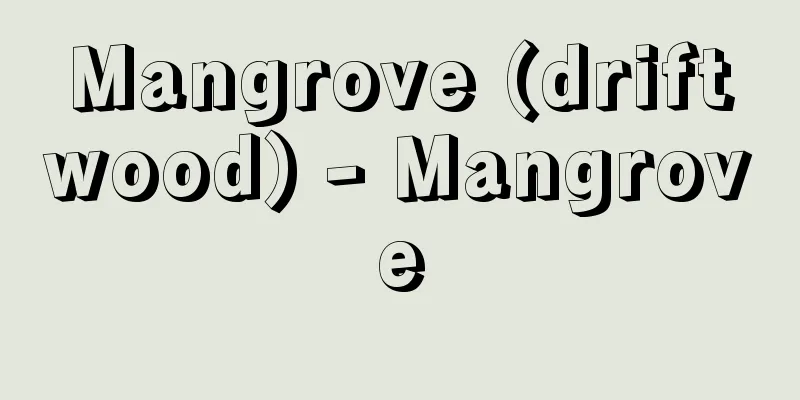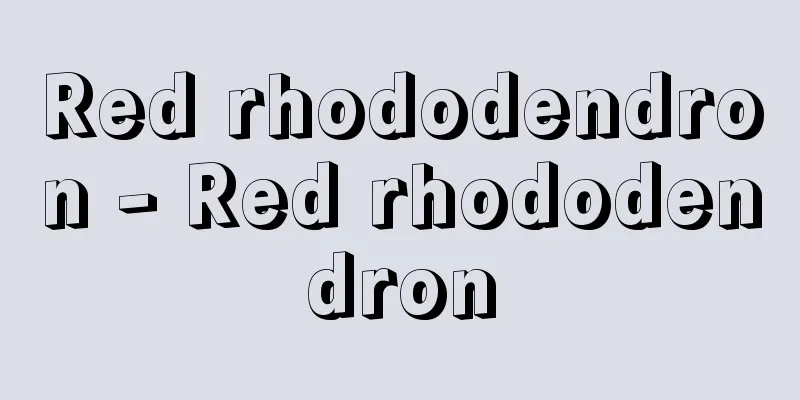Alkylation - Arukiruuka (English spelling) alkylation

|
It usually refers to a reaction in which an alkyl group, C n H 2 n +1 -, is bonded to an atom that constitutes an organic compound. Depending on the type of atom that bonds with the alkyl group, it is distinguished as C-alkylation for carbon, N-alkylation for nitrogen, O-alkylation for oxygen, etc. The alkylation of oxygen and metals in inorganic compounds is also known. It is widely used as one of the most important unit reactions in the chemical industry, and is also important in the synthesis of organic compounds and in reaction processes in living organisms. [Masahiro Hirota] C-AlkylationAlkylation at carbon atoms is actually known as a substitution or addition reaction in organic compounds. The main methods of C-alkylation reactions are coupling reactions, alkylation of carboanions such as enolates, formation of C-C bonds by addition reactions, and Friedel-Crafts reactions. (1) Coupling reaction Generally, this is a reaction in which the alkyl groups of an alkyl metal and an alkyl halide form a C-C bond. Examples of this reaction include the long-known Wurtz-Fittig reaction and the reaction of a Grignard reagent with an alkyl halide. Recently, many coupling reactions using transition metal catalysts such as palladium have been developed.
Na + C - H(COOC 2 H 5 ) 2 +R-X C-alkylation also occurs in the Michael addition reaction. Although not usually classified as an alkylation, cycloaddition reactions also produce C-C bonds. (4) Friedel-Crafts reaction This is an electrophilic substitution reaction that is often used for the alkylation of aromatic hydrocarbons (Ar-H). In a typical reaction, alkylation is carried out using a Lewis acid such as anhydrous aluminum chloride as a catalyst and an alkyl halide (RX) as an alkylating agent. This reaction proceeds by reacting aluminum chloride with an alkyl halide to generate an alkyl cation (R + ), which attacks the π (pi) electrons of the aromatic ring. If an equimolar or greater amount of alkyl halide is used, a large number of alkyl groups can be introduced into the aromatic ring. Alkylation can also be carried out using a combination of an alcohol R-OH with sulfuric acid or phosphoric acid.
[Masahiro Hirota] O-AlkylationAlkylation of oxygen in organic compounds is used to synthesize ethers from alcohols and phenols. Alkyl halides, dialkyl sulfates, and alcohols are commonly used as alkylating agents. Diazomethane ( CH2N2 ) is used as a reagent for methylation under mild conditions. When O-alkylation is performed with alkyl halides, the alcohol or phenol is first converted to an alkoxide or phenoxide with sodium and then reacted.
N-AlkylationAlkylation of nitrogen is used to convert primary amines to secondary amines, secondary amines to tertiary amines, and tertiary amines to quaternary ammonium salts. It is usually carried out with alkyl halides. A variety of alkylamines can be synthesized by this method. Ammonia can also be alkylated to produce primary amines.
[Masahiro Hirota] [Reference] | | | |©Shogakukan "> Addition reaction (diagram) Source: Shogakukan Encyclopedia Nipponica About Encyclopedia Nipponica Information | Legend |
|
通常は、有機化合物を構成する原子にアルキル基CnH2n+1-を結合させる反応をいう。アルキル基と結合する原子の種類により、炭素の場合はC-アルキル化、窒素の場合はN-アルキル化、酸素の場合はO-アルキル化など、それぞれの区別がある。無機化合物中の酸素や金属のアルキル化も知られている。化学工業のもっとも重要な単位反応の一つとして広く利用されているほか、有機化合物の合成、生体内の反応過程としても重要である。 [廣田 穰] C-アルキル化炭素原子上でのアルキル化は、実際には有機化合物の置換反応や付加反応として知られている。C-アルキル化反応のおもな方法としては、カップリング反応、エノラートなどの炭素陰イオンのアルキル化、付加反応によるC-C結合の形成、フリーデル‐クラフツ反応がある。 (1)カップリング反応 一般的にアルキル金属とハロゲン化アルキルのアルキル基どうしがC-C結合を形成する反応である。古くから知られているウルツ‐フィティッヒ反応、グリニャール試薬とハロゲン化アルキルとの反応などがあり、最近ではパラジウムなどの遷移金属触媒を用いる多くのカップリング反応が開発されている。
Na+C-H(COOC2H5)2+R-X マイケル付加反応でもC-アルキル化がおこる。また、普通アルキル化には含めないが、付加環化反応もC-C結合を生成する反応である。 (4)フリーデル‐クラフツ反応 芳香族炭化水素(Ar-H)のアルキル化にしばしば用いられる反応で、求電子的置換反応である。典型的な反応では、無水塩化アルミニウムなどのルイス酸を触媒とし、ハロゲン化アルキル(R-X)をアルキル化剤として用いてアルキル化を行う。この反応は、塩化アルミニウムとハロゲン化アルキルが反応してアルキル陽イオン(R+)が生成し、これが芳香環のπ(パイ)電子を攻撃する機構で進行する。ハロゲン化アルキルを等モル以上用いると、多数のアルキル基を芳香環に導入できる。アルコールR-OHと硫酸やリン酸との組合せを用いても、アルキル化を行うことができる。
[廣田 穰] O-アルキル化有機化合物中の酸素のアルキル化は、アルコールやフェノールからエーテルを合成する際に利用される。アルキル化剤としてはハロゲン化アルキル、硫酸ジアルキル、アルコールが一般に使われる。穏和な条件下でメチル化を行う試薬としてはジアゾメタンCH2N2が使われる。ハロゲン化アルキルによりO-アルキル化を行う場合には、アルコールやフェノールをナトリウムによりアルコキシドまたはフェノキシドにして反応させる。
N-アルキル化窒素のアルキル化は第一アミンを第二アミンに、第二アミンを第三アミンに、第三アミンを第四級アンモニウム塩にする際に利用される。通常はハロゲン化アルキルを用いて行う。この方法により各種のアルキルアミンが合成される。アンモニアをアルキル化して第一アミンをつくることもできる。
[廣田 穰] [参照項目] | | | |©Shogakukan"> 付加反応〔図〕 出典 小学館 日本大百科全書(ニッポニカ)日本大百科全書(ニッポニカ)について 情報 | 凡例 |
<<: Algirdas (English spelling)
Recommend
OEM Supply - OEM Supply
...This refers to a production method or product ...
Halobates micans (English spelling)
… [Shoichi Miyamoto]. … *Some of the terminology ...
Fruits - Kasai
1. Fruits and vegetables. 2. Vegetables whose frui...
Essenes - Essenes is (English spelling) Essenes
The sect was one of the three major Jewish sects a...
Orofat - Orofat
...The themes of canoeing and fishing appear freq...
La Cumparsita (English spelling)
...This is the most widely known tango song. It i...
Amabaha Collection - Amabaha Collection
…The Municipal Museum of Art in Basel, Switzerlan...
Granary - Kokusoin
〘Noun〙 During the Heian period, one of the governm...
Balla, G. (English spelling) BallaG
... The most radical manifesto in support of the ...
Paulus Orosius
Date of birth and death unknown. A clergyman and ...
Oryginae
...All of them are native to Africa, and there ar...
Dentures - Gishi
A replacement device to replace lost teeth and su...
Talkie film - Talkie movie (English spelling)
Attempts to make "talking films" that pr...
Kyogyoshinsho - Kyogyoshinsho
A Buddhist book from the early Kamakura period wr...
Qiang flute - Kyoteki
〘Noun〙 The flute of the Xiqiang people, a foreign ...









